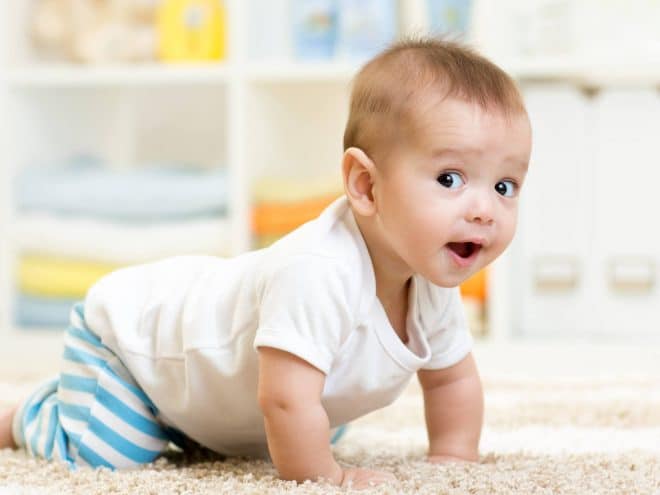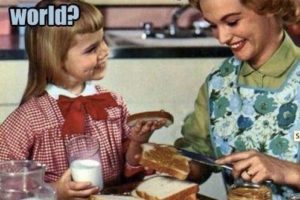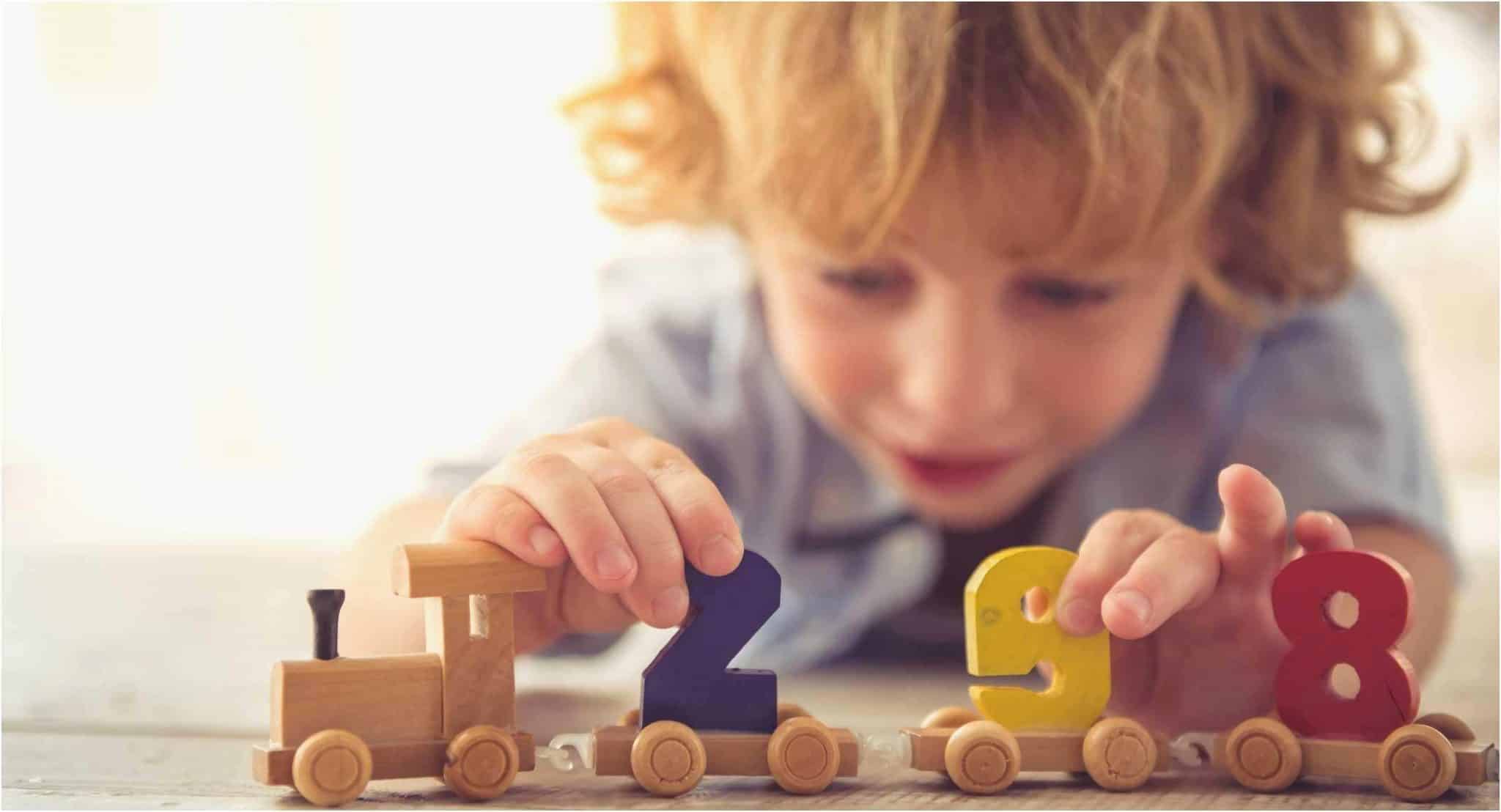How To Prepare For A Baby
Once your baby comes home, you won’t have enough free time, if any, to deal with getting your house in order for the little one. This is why preparing for baby should be done before your baby is born. That way, you’ll be able to relax and focus on your little bundle of joy.
Below is a helpful baby proofing checklist to help you get your house in order for the new arrival.
Contents
How to Get Your House in Order for a New Baby
-
Baby Proofing Your House
 It’s true that your newborn will not be crawling around any time soon. However, time will fly by soon and it’s best to be prepared when it comes to babies. And with all the responsibilities that you have, it’s easy to forget about the more dangerous areas in your home.
It’s true that your newborn will not be crawling around any time soon. However, time will fly by soon and it’s best to be prepared when it comes to babies. And with all the responsibilities that you have, it’s easy to forget about the more dangerous areas in your home.
In that respect, it’s best to babyproof your home before your baby’s arrival.
-
Install Carbon Monoxide Detectors
If you use gas or oil appliances, or you have an attached garage, install a carbon monoxide detector![]() on every level of your house . If you already have carbon monoxide detectors, check their batteries and make sure they are working.
on every level of your house . If you already have carbon monoxide detectors, check their batteries and make sure they are working.
-
Install Smoke Detectors
This is important and often overlooked, but do install smoke detectors![]() in the hallways outside of bedrooms, and on every level of your house.
in the hallways outside of bedrooms, and on every level of your house.
-
Ensure A Safe Water Temperature To Avoid Burns
Adjust the temperature of your water heater to a maximum of 120 degrees Fahrenheit (48 degrees Celsius), or install a temperature guard on your water heater. Here’s a helpful guide on how to do it.
-
Be Prepared For Small Accidents
Buy a first aid kit![]() for your medicine cabinet. Also keep a small first aid kit in your car.
for your medicine cabinet. Also keep a small first aid kit in your car.
-
Cover Electrical Outlets
Many newly built homes have safety measures that would prevent electrocution if a baby were to tamper with the outlets. If you feel unsure or just to be safe, cover all outlets with outlet covers![]() or furniture.
or furniture.
-
Avoid Slipping Accidents
Put non-slip pads![]() under all area rugs
under all area rugs![]() .
.
-
Cover Sharp Edges
Sharp furniture corners and edges must be covered with baby safety bumpers and padding![]() .
.
-
Latch Cupboards & Drawers
Cupboards, drawers and doors within your baby’s reach must be latched with baby safety latches![]() . Even if there is nothing dangerous inside, your baby’s fingers can get hurt when playing with doors and drawers.
. Even if there is nothing dangerous inside, your baby’s fingers can get hurt when playing with doors and drawers.
-
Cover Looped Cords of Curtains & Blinds
If you have blinds or curtains with looped cords, get rid of them or cover them. They are a strangulation hazard. Install safety tassels and cord stops to tuck away the cords.
-
Install A Landline In Case Of Power Outages
Cell phones can run out of power and cordless phones won’t work when the power is out. Therefore, install a landline and have at least one phone connected to it.
-
In Case Of Emergency, Make Sure Your Home Can Be Found
This is often overlooked but do make sure that fire or rescue can actually find your home in case of an emergency. Check to see that your house or apartment number is easy to see from the street.
-
Add Medical Information To Your Phone
Be sure to add all medical information and emergency contacts to your phone. Very importantly – make sure they are accessible even when your phone is locked.
Baby Proofing Your Living Room

When getting ready for baby, you will need to accept that your living room is probably going to turn into a family room… at least while your child(ren) are still young. In that respect, it’s important to organize and decorate this area so that it is safe for your baby.
With your baby’s arrival, this may be the perfect time to redecorate your living room. For starters:
-
Cushion Hardwood Floor & Tiles
If you have hardwood floors or tiles, add an area rug![]() to cushion falls. Be sure to add a non-slip rug pad
to cushion falls. Be sure to add a non-slip rug pad![]() under your rugs to avoid slipping.
under your rugs to avoid slipping.
-
Avoid Sharp Edges
Instead of furniture with sharp edges, go for curved corners instead.
If you have tables and other furniture that has sharp corners, consider parting with them. If that’s not an option, add baby bumpers and corner cushions![]() to sharp edges.
to sharp edges.
-
Get Stain Resistant Furniture
If you are buying new sofas and chairs, make sure they are stain resistant. You will have spills… guaranteed! Darker fabrics tend to hide stains, spills and sticky smudges better than light fabrics.
If new sofas and chairs are not an option for you, consider slip covers![]() instead. This allows you to easily launder your upholstery when the inevitable messes happen.
instead. This allows you to easily launder your upholstery when the inevitable messes happen.
-
Rearrange Your Furniture To Avoid Danger
Use safe furniture to block access to things that might be dangerous, like a bookcase your baby could try to climb on.
-
Replace Unstable Furniture
When babies become mobile, they pull and push on anything and everything around them. As such, you’re going to need sturdy, reliable furniture around you.
Be sure to get rid of anything that is unstable or wobbly, and replace them with baby friendly options.
-
Anchor Wall Furniture
Bookshelves, media units, or anything that can be pulled over should be anchored to the wall. These also include accent cabinets and dressers in the rest of your house.
-
Remove Anything Breakable
This is a great time to declutter.
Remove or secure any items that can easily be tipped, like table lamps. Even if these items are out of reach, things can topple over if a table is bumped.
-
Add Latches To Drawers & Doors
Babies are curious. They are going to get into stuff. Be proactive and put baby safe latches ![]() everywhere.
everywhere.
-
Get Rid of Toxins In Your Home
Paints

If your house was built before 1978, get any flaking or peeling paint sealed or removed by a professional. Dust from lead paint can be harmful if ingested.
If you’re painting, opt for low or zero-VOC (volatile organic compound) paint.
VOCs are found in many building materials and are partially responsible for that new paint smell. VOCs are unstable chemicals that let off gasses which can be harmful to people and the environment. This is why the government now regulates them.
When inhaled, VOCs can contribute to several health problems like irritation to your airways, headaches, nausea, damage to the liver, kidneys, or central nervous system.
Obviously, this is not good for anyone, let alone a new baby with a developing immune system. As such, it’s best to use paints (and products) with no or minimal amounts of VOCs whenever possible. When buying paint, look for labels marked “non-toxic” or “natural.” The label should say that it contains no extra solvents or additives and check for 5g/L or less of VOCs.
Finish all your painting and wallpapering at least eight weeks before your baby is due. This allows your home to air out and therefore avoid exposing your baby to any potentially harmful fumes.
But paint is not the only way to remove harmful toxins from the environment.
Cleaning Materials
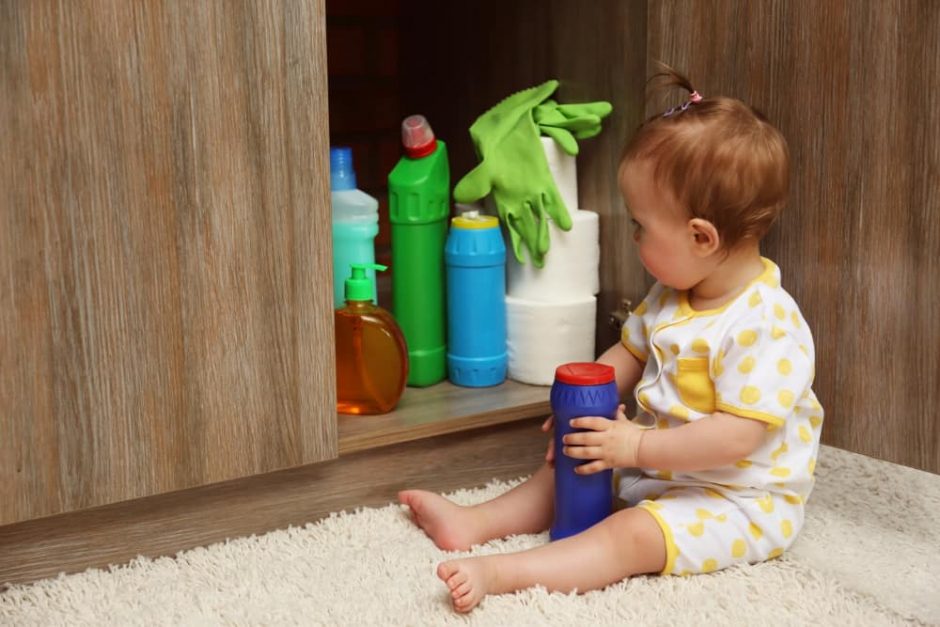
We assume they are safe, but many popular household cleaners are harmful at best, or dangerously toxic at worst.
According to Beth Greer, author of Super Natural Home![]() , ingredients in common household products have been linked to asthma, cancer, reproductive disorders, hormone disruption and neurotoxicity.
, ingredients in common household products have been linked to asthma, cancer, reproductive disorders, hormone disruption and neurotoxicity.
For starters, you should really address all of the cleaning agents and other chemicals that you use. If you have not done so already, replace your cleaners with all-natural household cleansers.
Some people do complain that all-natural household cleaners![]() are not as efficient. If you do decide to keep “regular” cleaners, do keep them in the top cabinets, far away from your child’s reach.
are not as efficient. If you do decide to keep “regular” cleaners, do keep them in the top cabinets, far away from your child’s reach.
Poisonous House Plants
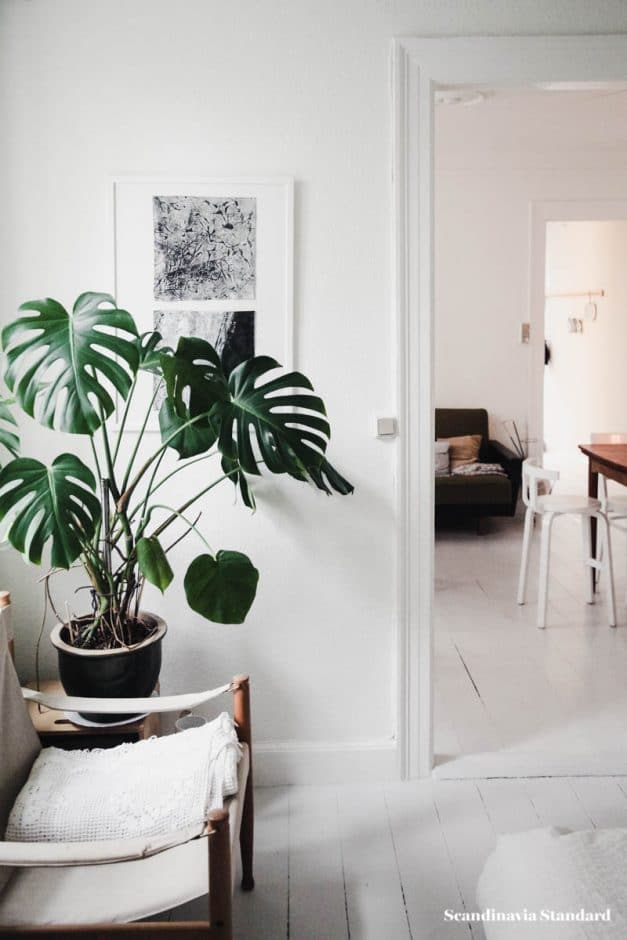
As you get your house in order, do consider what types of plants you have indoors and outdoors.
This may sound weird to some of us but yes, some plants that you possibly have in your house right now, are toxic. These include popular plants like Philodendrons, Pothos, English Ivy, Easter Lily, Oleander, etc.
Here’s a more detailed look of poisonous house plants.
Arrange The Nursery For Safety & Functionality
 As you get your house in order, keep in mind that it’s not about creating an Instagram or Pinterest perfect nursery. Instead, it’s all about your baby’s nursery being safe and functional.
As you get your house in order, keep in mind that it’s not about creating an Instagram or Pinterest perfect nursery. Instead, it’s all about your baby’s nursery being safe and functional.
The Crib
- Ensure that none of the crib slats are more than 2 and 3/8 inches apart. Slats that are too far apart are a safety hazard.
- Make sure that all the bolts and screws are tight.
- Ensure there are no gaps between the mattress and crib – this too is a safety hazard.
- Keep comforters, bumpers, pillows, blankets, and toys out of the crib. They are cute but again, they are safety hazards. The American Academy of Pediatrics strongly warns against them.
- Avoid placing the crib close to heaters, radiators, wall decorations, cords, lamps or anything that your baby can reach for.
- Avoid placing the crib by the window. The area by the window tends to be cooler than the temperature in the house. Keeping your baby’s crib on an inner wall will be a more comfortable placement.
- The area right by the window can also be noisy, particularly if you live in the city. An inner wall will be quieter.
- Windows are also a safety hazard because babies can reach blinds and curtains. The cords of blinds are a strangulation hazard.
- Do not place lamps or accessories that your baby can pull down, close to the crib. Items that are too close could also fall on your baby while he/she is sleeping.
- Group the crib and a chair close together. This allows you to get your baby and sit down for an easy night-time feeding. Consider adding a small nightstand with a dim lamp
 next to the chair.
next to the chair.
The Dresser & Changing Table
- Group the baby dresser
 , the changing table
, the changing table and the diaper pail
and the diaper pail  (if you are using one). When you are changing your baby, you will want everything within arms reach.
(if you are using one). When you are changing your baby, you will want everything within arms reach. - Try to keep a clothes hamper
 close by to quickly and easily discard dirty laundry.
close by to quickly and easily discard dirty laundry. - Place diapers, baby wipes
 and supplies where you can easily reach them from the changing table.
and supplies where you can easily reach them from the changing table.
The Baby Monitor
When planning for your nursery, choose the best spot for your baby monitor ![]() in terms of your baby’s safety.
in terms of your baby’s safety.
Baby monitors should be placed at least 6 foot / 1.8 meters away from your baby. This is the minimum safety distance recommended to limit exposure to electromagnetic radiation. According to research, digital cordless baby monitors placed less than 3.2 foot / 1 meter away from a baby’s crib emit almost the same level of radiations as a cell phone tower 500 feet / 150 meters away.
If your baby monitor comes with a power cable, place it out of your baby’s reach to prevent the risks of strangulation.
Naturally, place your baby monitor![]() at an unobstructed viewing angle.
at an unobstructed viewing angle.
Safety Measures After Your Baby Is Home
Your baby is home. Congratulations!
You’ve done all the prep. Your home is officially baby proofed. However, baby proofing your house needs to be a mindset, not just the baby proofing checklist above. That means, you’ll always be thinking about potential dangers.
For example:
- Always unplug and store electric appliances that aren’t use, like irons, hairdryers and curling irons;
- Do not put breakable items like mugs close to the edges of tables and counters. The same goes for sharp objects. As your baby gets older, he/she may try to reach for it;
- Put your purse and visitors’ purses out of reach.
- If you plan to hook a portable highchair
 onto your kitchen table, check that the table is sturdy and strong.
onto your kitchen table, check that the table is sturdy and strong.
For these and many more tips, check out our post about Baby Proofing.
“How to get your house in order” is a collaboration by Tulamama and PlainHelp. The PlainHelp blog is written by Kevin Jefferson, who has gone through an extensive home renovation with his son. Kevin says the renovation was both thoroughly enjoyed, and dreaded every morning. He is now the proud owner of half his dream house (the other half has been waiting for spring). You can read more of Kevin’s work at PlainHelp.
